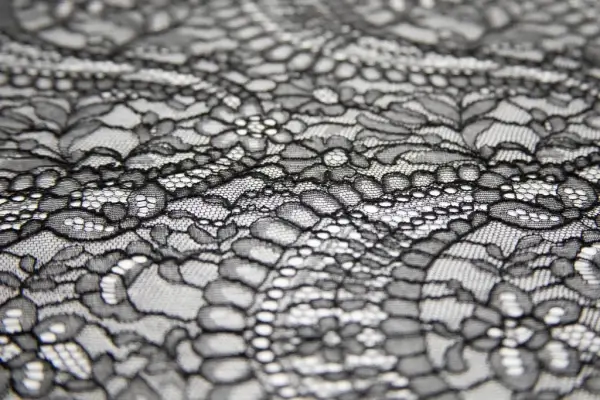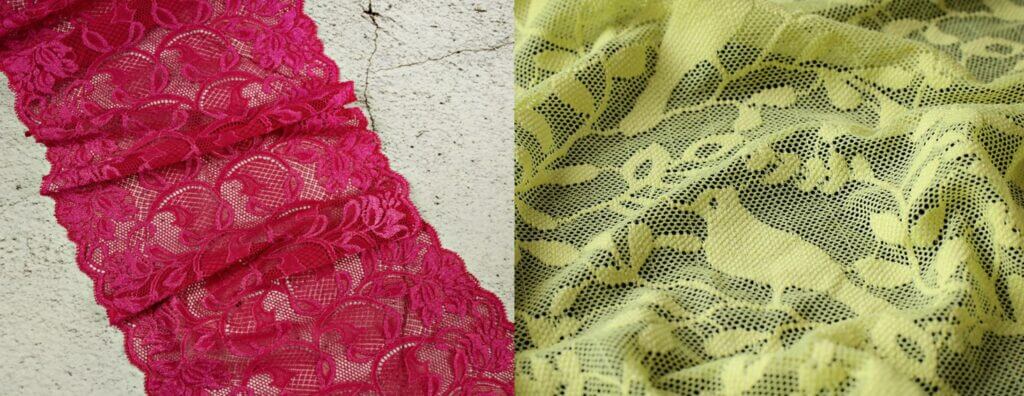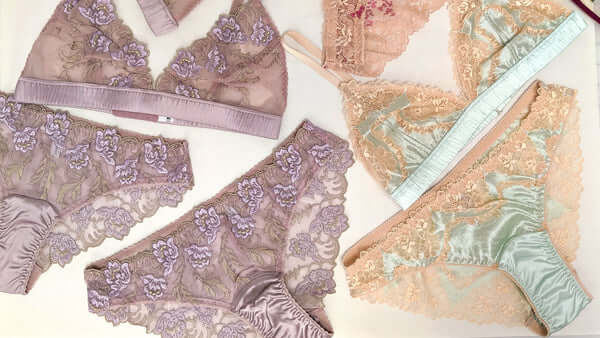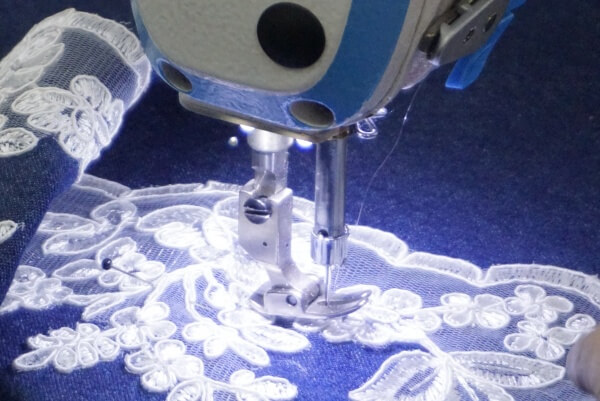Don't Let a Factory Ruin Your Lace: 3 Critical Mistakes in High-End Lingerie Production?
Your brand has invested a fortune in exquisite, high-end lace for your new collection. But now comes the fear: can your manufacturing partner handle it without turning that precious fabric into expensive waste?
The three most critical mistakes in high-end lace lingerie production are: treating all lace types the same, underestimating the fabric waste from pattern matching, and using standard sewing techniques for delicate materials. Avoiding these pitfalls requires a partner with specialized knowledge, precise cutting, and expert sewing capabilities.

That beautiful lace is the heart of your design, representing your brand's commitment to quality and luxury. You've spent months perfecting the concept. The last thing you want is for production errors to compromise your vision, delay your launch, and destroy your budget. Understanding the key manufacturing challenges is the first step to protecting your investment. Let's dive into the details to ensure your designs are brought to life flawlessly.
Mistake #1: Are You Treating All Lace the Same?
You've found a lace supplier, but do you know exactly what you're buying? Choosing the wrong type of lace for your design, or a factory that doesn't understand the difference, is the first step toward a disappointing and costly outcome.
Understanding the specific type of lace you are using—whether it's premium Leavers lace or intricate Jacquardtronic—is crucial. Each type has a unique structure, elasticity, and thickness that dictates the entire manufacturing process, from cutting methods to the type of sewing needle used. Misunderstanding this is a recipe for poor quality.

As a manufacturer, I've seen brands come to us with beautiful designs after a terrible experience elsewhere. One client wanted to create a premium line using what they thought was Leavers lace. Their previous factory treated it like any other fabric, and the result was puckering seams and a final product that looked cheap. When they came to us at HAVING (China) Ltd., we first helped them identify the material correctly. It turned out to be a delicate Jacquardtronic lace. This distinction is everything. Treating all lace the same is a critical error because their fundamental structures are vastly different. Knowing the difference empowers you to ask factories the right questions and ensures you get the quality you're paying for.
Understanding Lace Tiers
The value, feel, and production requirements of lace vary dramatically. A true high-end partner must master these differences.
| Lace Type | Key Characteristics | Best For |
|---|---|---|
| **Leavers Lace** | Considered the "couture" of lace. Extremely fine, intricate patterns with a delicate 3D quality. Made on historic looms. Very low elasticity. | Luxury bridal wear, heirloom lingerie pieces, high-fashion details where beauty trumps function. |
| **Jacquardtronic/Textronic** | Modern, high-tech laces that offer complex patterns with good elasticity and softness. A great balance of beauty and performance. | Premium everyday lingerie, bras, panties, and apparel where both aesthetics and comfort are key. |
| **Standard Raschel Lace** | Mass-produced, highly durable, and cost-effective. Patterns are simpler, and the feel is less refined. High stretch. | Fast fashion, budget-friendly lines, trims, and products where durability is the main concern. |
Mistake #2: Are You Forgetting About Fabric Waste?
Your design calls for perfect symmetry, with the lace pattern matching flawlessly across the front of a bra. It looks stunning. But have you considered how this aesthetic choice impacts your fabric cost and a factory's ability to deliver?
Pattern matching, or "对花" (duì huā), is a non-negotiable for high-end lingerie. However, it can easily increase fabric consumption by 30-50% or more compared to standard cutting. If this isn't planned for, it leads to massive cost overruns and disputes with your manufacturer.

This is one of the biggest hidden costs in lingerie production. A brand founder might budget for a standard 15% fabric waste. But achieving perfect symmetry, especially with large or irregular lace patterns, requires the cutter to carefully place each pattern piece on a very specific part of the lace. This leaves large, unusable gaps between the cut pieces. A factory that isn't transparent about this will either surprise you with a massive bill for extra fabric, or they'll cut corners, leading to a mismatched, cheap-looking product. At our facility, our "body-before-fabric" philosophy means we value aesthetics, but we also use CAD software to create the most efficient cutting markers before production begins. This allows us to provide our clients with a realistic waste estimate upfront, preventing any nasty surprises.
The True Cost of Beauty
Symmetry is beautiful, but it's not free. The key is to work with a partner who can optimize for beauty while controlling waste.
- Standard Cutting: In a normal production run, pattern pieces are nested together as tightly as possible to maximize fabric yield. The focus is purely on efficiency.
- Pattern Matching: The focus shifts from efficiency to aesthetics. Each piece must be placed on an identical motif of the lace. For example, the left cup of a bra must be a mirror image of the right cup. This is a manual, skill-intensive process.
We can break down the impact like this:
| Factor | Standard Cutting | Pattern-Matched Cutting |
|---|---|---|
| **Primary Goal** | Minimize Waste | Maximize Aesthetic Symmetry |
| **Typical Waste %** | 10-15% | 25-50%+ |
| **Labor Cost** | Low (can be automated) | High (requires skilled manual labor) |
| **Result** | Efficient but potentially random pattern placement. | A beautiful, premium, and symmetrical final product. |
Mistake #3: Is Your Factory Using a "One-Size-Fits-All" Sewing Method?
The lace has been identified and cut perfectly. Now for the final challenge. Are you confident your factory won't ruin it during sewing with the wrong needles, thread, or machine settings, resulting in puckered seams and a garment that falls apart?
Sewing delicate lace requires highly specialized techniques. Using standard equipment designed for cotton or polyester will damage the fine fibers, causing puckering, skipped stitches, and weak seams. A high-end product demands specific needles, finer thread, and expertly calibrated machine tension.

This is where true craftsmanship really shows. I've seen brands get beautiful samples, only for the bulk production to be a disaster because the factory switched to faster, standard methods to save time. The secret to flawless seams on lace lies in the details. At our factory, which supports over 3000 stores with our products like bras and panties, every machine is calibrated by a dedicated technician for the specific fabric being used. Our sewers are artisans who have years of experience handling these delicate materials. They know that the right combination of a ballpoint needle, lightweight thread, and a gentle touch is essential. It's not just about sewing a seam; it's about preserving the beauty and integrity of the lace.
The Artisan's Toolbox
Producing a high-end garment requires more than just a standard sewing machine. It requires a deep understanding of how different elements interact with the fabric.
- Needles: A sharp, universal needle will tear and snag fine lace. A "ballpoint" or "stretch" needle, typically in a very fine size like 65/9 or 70/10, is required. It pushes the delicate fibers aside instead of piercing and breaking them.
- Thread: Heavy polyester thread will overpower the lace, causing it to bunch up and pucker. A lightweight, fine polyester or nylon thread is necessary for a seam that is both strong and invisible.
- Machine Settings: High tension and high speed are the enemies of lace. The sewing machine's tension must be loosened, and the stitch length might need to be adjusted to prevent the fabric from gathering. The sewer must guide the fabric gently, never pulling or stretching it.
This level of detail is what separates a basic workshop from a true manufacturing partner.
Conclusion
Avoiding these three mistakes—misidentifying lace, ignoring cutting waste, and using improper sewing methods—is the key to successfully producing high-end lace lingerie that honors your design and brand promise.
Frequently Asked Questions (FAQ)
1. What is the most expensive type of lace?
Generally, Leavers lace is considered the most expensive and luxurious. It is produced on historic, slow-moving looms, allowing for incredibly intricate and fine patterns that cannot be replicated by modern machines.
2. How much fabric is wasted when making lingerie?
For standard lingerie, a 10-15% fabric waste is typical. However, for high-end designs that require precise pattern matching on lace, the waste percentage can easily jump to 25-50% or even higher, depending on the complexity of the pattern.
3. What is the difference between OEM and ODM in lingerie manufacturing?
OEM (Original Equipment Manufacturer) is when a factory produces lingerie based on your exact designs and specifications. ODM (Original Design Manufacturer) is when you choose from the factory's existing designs and add your own branding. We at HAVING offer flexible OEM/ODM services to suit your brand's needs.
4. How do you ensure color consistency in lace lingerie production?
Color consistency is ensured through a process called "lab dipping." Before bulk dyeing, small samples of the lace and other fabrics are dyed and sent to the client for approval. Once the color standard is approved, the bulk dyeing process begins, using that standard as the master reference to ensure all components match perfectly.
